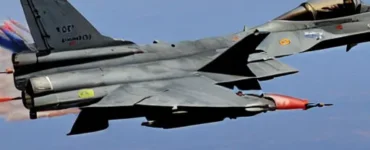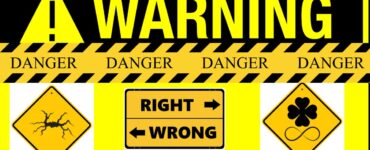What Does SOS Stand For?
Many people assume that the distress signal is an abbreviation for “save our souls” or “save our ship.” But in fact, they are backronyms and the letters simply do not stand for anything.
Three individual letters are not even really supposed to be the signal. It’s just a three-dot, three-dashes, and three-dot continuous Morse code string, all running together with no spaces or full stops (… —- …). However, since three dots form the letter “S” and three dots form an “O” in the International Morse code, for convenience, the signal was called “SOS.”
This link led to letters emerging into their own as a visual distress signal originating from the Morse Code and those in need of help sometimes spell it out on the land to be seen from above. If you wanted to, you might break down the string into IJS, SMB and VTB as well.
The Logic Behind “SOS”
So why use the particular string of dots and dashes if it doesn’t have any meaning? And that was the easiest way to complete the work.
When wireless radiotelegraph machines first landed on ships at the turn of the 20th century, sailors in trouble needed a way to draw attention, signal distress, and ask for help — a special signal that would communicate clearly and rapidly and not be mistaken for other communications. At first, numerous organisations and countries had “in-house” distress signals of their own.
The U.S. Navy used “NC,” which was the Foreign Code of Signals’ maritime flag signal for distress. “CQD” was used by the Marconi Company, who rented their equipment and telegraph operators to numerous ships. The German Regulations for the Control of Spark Telegraphy of 1905 required that all German operators use “…—…”.
It was overwhelming and potentially risky to have these many distress signals. This meant that, even by using the International Morse Code, a ship in distress in foreign waters had a language barrier to be solved by would-be rescuers. Because of this and other problems, different countries agreed to get together to discuss the idea of creating some international radiotelegraph communications regulations.
The International Wireless Telegraph Convention congregated in Berlin in 1906, and representatives ventured to create a conventional international distress call. “Marconi’s” -.-.-.-.— .. “and” ………-..-..-..” “(SSSDDD), “proposed by Italy at the previous meeting, was considered too cumbersome. However, Germany’s “… — …” could be submitted speedily and easily and was difficult to misinterpret. For the nations that met at the meeting, it was chosen as the universal distress signal, which came into effect on July 1, 1908.
Getting on Board with “SOS”
The first recorded use, in August 1909, of the “SOS” as a distress signal was just over a year later. When the ship was crippled by a broken propeller off the coast of Cape Hatteras, North Carolina, the wireless operators on the SS Arapahoe sent a signal.
However, not everyone got on board with the new norm as easily. The Marconi Company was especially reluctant to give up on “CQD.” After the ship struck an iceberg, the Marconi operators onboard the Titanic initially only sent the signal, before the other operator suggested that they also try the new “SOS” signal.






